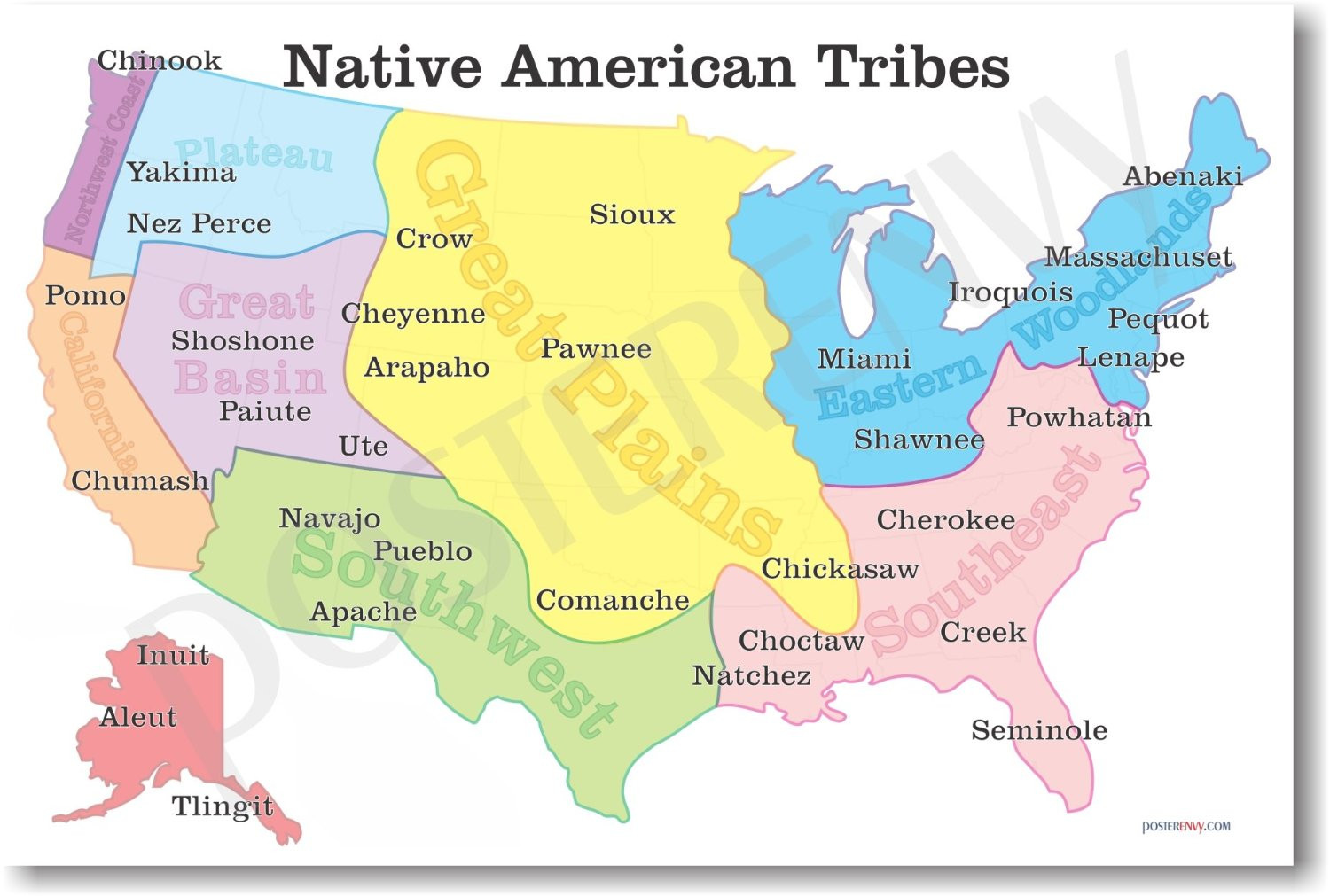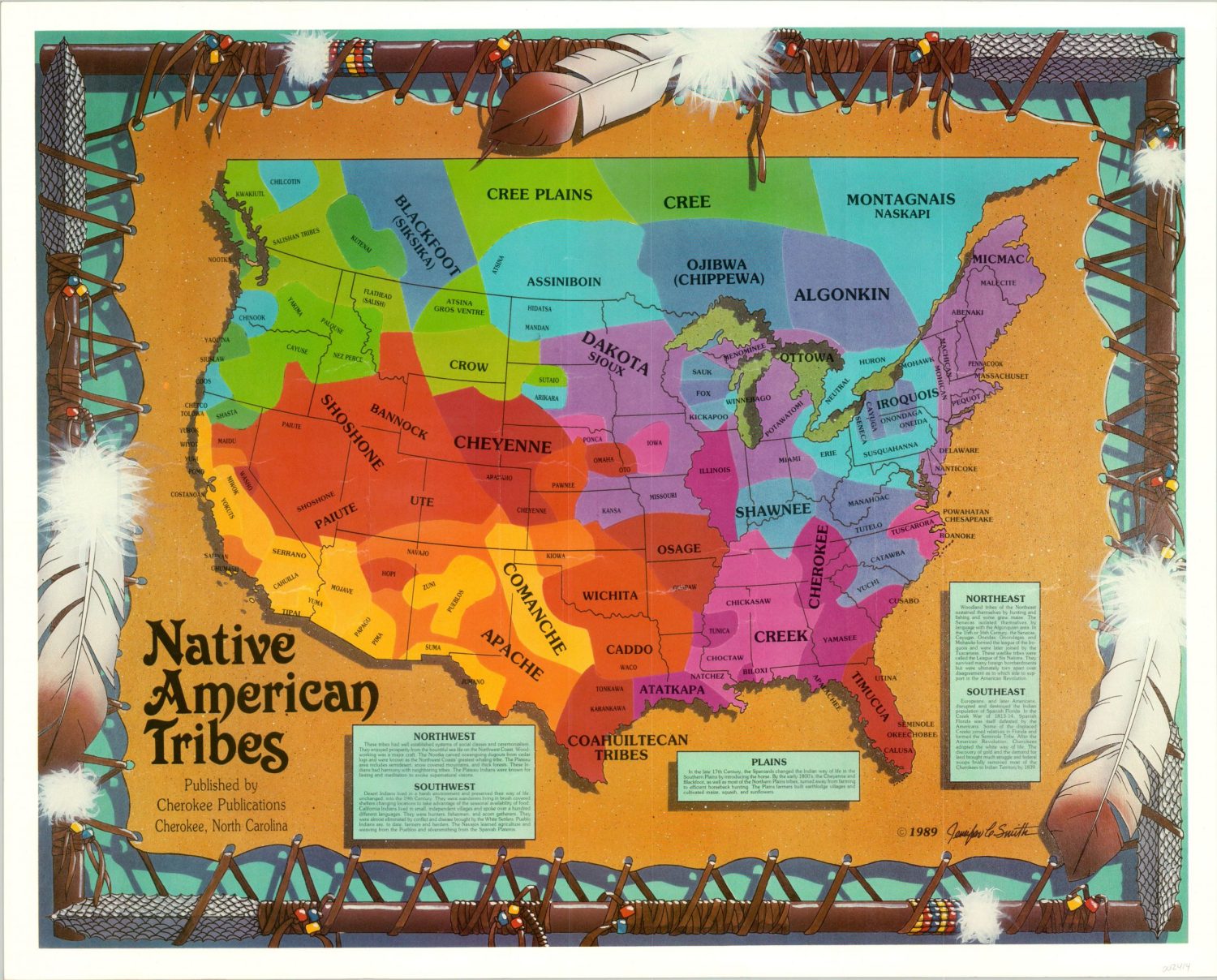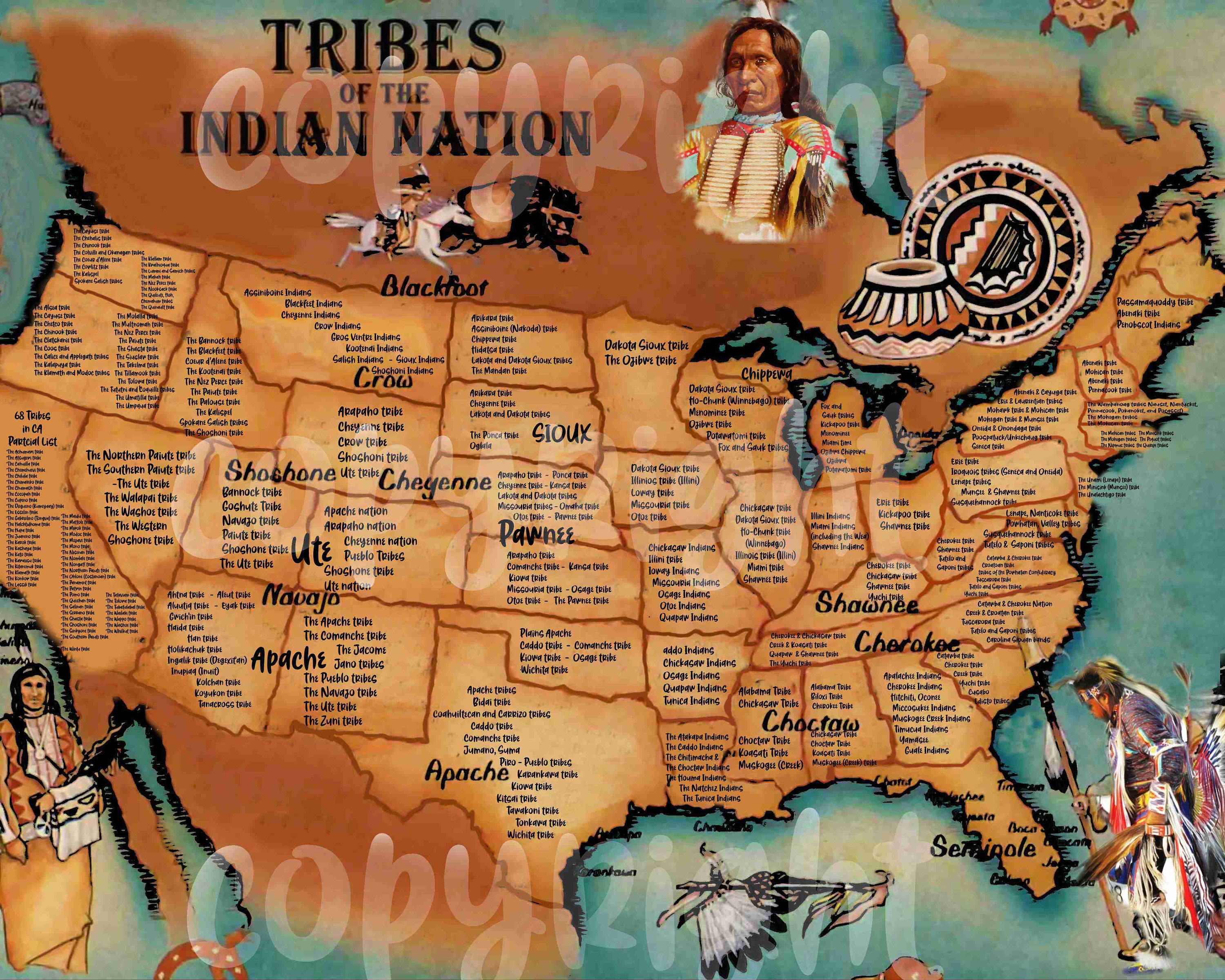
The Enduring Mosaic: Unpacking Native American Tribes by State
For many, the image of "Native Americans" conjures a singular, often romanticized, vision—perhaps a feather-bonneted Plains warrior or a stoic desert dweller. Yet, this monolithic perception obscures a breathtaking reality: the indigenous peoples of what is now the United States represent an unparalleled tapestry of cultures, languages, histories, and spiritual beliefs. Far from being a relic of the past, Native American nations are vibrant, sovereign entities, each with a unique story deeply rooted in the lands they inhabit, often spanning millennia.
To ask "What are Native American tribes by state?" is to embark on a journey through a complex, living mosaic. It’s not simply a matter of listing names on a map; it requires understanding the profound impact of pre-contact territories, forced removals, treaty obligations, and the ongoing struggle for self-determination. Today, there are over 570 federally recognized tribes in the United States, along with numerous state-recognized and unrecognized tribes, each with its own government-to-government relationship with the U.S. federal or state authorities. Their presence and influence vary dramatically from one state to another, reflecting both ancient patterns and the enduring consequences of colonialism.

Beyond the Map: Sovereignty and Shifting Landscapes
Before delving into specific examples, it’s crucial to grasp the concept of tribal sovereignty. These are not mere ethnic groups; they are nations within a nation, possessing inherent rights to self-governance, jurisdiction over their lands, and the power to determine their own citizenship. This unique status, often misunderstood, dictates how tribes interact with state and federal governments.
The current distribution of tribes is a direct result of both ancient migrations and the tumultuous history of the past few centuries. Pre-contact, tribal territories often spanned vast regions, crossing modern state lines. The era of European colonization and U.S. westward expansion brought devastating epidemics, wars, and policies of forced removal—most infamously the "Trail of Tears"—that reshaped the indigenous map. Tribes were forcibly relocated from their ancestral lands to designated "Indian Territories," primarily in what is now Oklahoma, or confined to reservations, often on marginal lands far from their original homes.
Today, while some tribes maintain a strong presence on their ancestral lands, others have adapted to life on reservations established elsewhere, or live as dispersed communities in urban centers across the nation, maintaining cultural ties despite geographic distance.
A Regional Kaleidoscope: Illustrative Examples
To truly appreciate the diversity, let’s explore some key regions and the tribes that define them:
1. The Southwest: Ancient Roots and Enduring Presence (Arizona, New Mexico, Utah)
This arid region is home to some of the oldest continuous communities in North America, with cultures deeply intertwined with the landscape.

- Arizona is a prime example of tribal diversity, hosting over 20 federally recognized tribes. The Navajo Nation (Diné), straddling Arizona, New Mexico, and Utah, is the largest Native American tribe in the U.S. by land area (larger than West Virginia) and population (over 300,000 enrolled members). Their intricate language, rich spiritual traditions, and economic enterprises (including energy and tourism) showcase a powerful blend of tradition and modernity. Nearby, the Hopi Tribe, residing on mesas surrounded by the Navajo Nation, maintains ancient agricultural and ceremonial practices that date back millennia. Their unique governance structure and profound spiritual connection to their land are a testament to enduring resilience.
- New Mexico is famous for its 19 Pueblo communities, such as the Taos Pueblo, a UNESCO World Heritage site continuously inhabited for over 1,000 years. Each Pueblo maintains distinct languages (Tewa, Tiwa, Keres, Zuni, Towa) and unique cultural practices, centered around ancient farming techniques and vibrant ceremonial life. "Our traditions are our strength," says a leader from Acoma Pueblo. "They connect us to our ancestors and guide our future." Beyond the Pueblos, New Mexico also hosts the Mescalero Apache Tribe and Jicarilla Apache Nation, reflecting the historical presence of nomadic Plains tribes in the region.
2. The Pacific Northwest: Salmon, Sovereignty, and Resource Management (Washington, Oregon)
The lush, resource-rich environment of the Pacific Northwest fostered cultures deeply connected to salmon, cedar, and the sea.
- In Washington State, tribes like the Lummi Nation, Makah Tribe, and Quinault Indian Nation are coastal peoples with a strong maritime heritage, known for their fishing rights, whaling traditions, and canoe culture. Inland, the Yakama Nation and Nez Perce Tribe (also in Oregon and Idaho) are Plateau peoples, historically renowned horsemen and traders, whose treaty rights to fish, hunt, and gather remain fiercely protected. The 1974 Boldt Decision affirmed the tribes’ right to 50% of the harvestable salmon, a landmark victory for tribal sovereignty and environmental justice.
- Oregon is home to nine federally recognized tribes, including the Confederated Tribes of Grand Ronde and the Confederated Tribes of Siletz Indians, both formed from numerous smaller tribes displaced during the reservation era. These tribes have successfully revitalized their cultures and economies, often through gaming, while also engaging in significant land restoration and environmental stewardship.
3. The Great Plains and Oklahoma: The Legacy of Removal (South Dakota, Oklahoma)
This region tells a story of vast bison herds, warrior cultures, and the profound impact of forced removal.
- South Dakota is synonymous with the Lakota, Dakota, and Nakota (Sioux) nations, including the Oglala Lakota (Pine Ridge Indian Reservation), Rosebud Sioux Tribe, and Cheyenne River Sioux Tribe. These tribes embody the enduring spirit of the Plains peoples, grappling with historical trauma and modern challenges while striving to preserve their language, ceremonies, and connection to sacred sites like the Black Hills. "The land is our mother; we must protect her," is a sentiment deeply embedded in Lakota philosophy, guiding their ongoing battles for environmental protection and treaty rights.
- Oklahoma is unique, often called "Indian Territory" due to the forced relocation of over 60 tribes there, primarily during the 19th century. The Five Civilized Tribes—the Cherokee Nation, Choctaw Nation of Oklahoma, Chickasaw Nation, Muscogee (Creek) Nation, and Seminole Nation of Oklahoma—were forcibly removed from the southeastern U.S. Despite immense suffering, they rebuilt their governments, schools, and economies in Oklahoma. Today, the Cherokee Nation is the largest tribe by enrollment (over 400,000 members), demonstrating remarkable resilience and a vibrant cultural resurgence. Oklahoma also hosts numerous Plains and other tribes, creating an unparalleled concentration of tribal nations.
4. The Eastern Seaboard and Southeast: Resurgence Against the Odds (New York, North Carolina, Florida)
These regions saw the earliest and most sustained contact with European settlers, leading to rapid displacement, but also incredible persistence.
- In New York, the Haudenosaunee (Iroquois) Confederacy—comprising the Mohawk, Oneida, Onondaga, Cayuga, Seneca, and Tuscarora nations—remains a powerful and influential presence. Their Great Law of Peace is believed to have inspired aspects of the U.S. Constitution. Despite centuries of encroachment, they maintain sovereign territories and actively preserve their languages and traditional governance.
- North Carolina is home to eight state-recognized tribes and one federally recognized tribe, the Eastern Band of Cherokee Indians (who managed to resist removal to Oklahoma). The Lumbee Tribe of North Carolina, with over 55,000 members, is the largest state-recognized tribe in the U.S. and has fought for federal recognition for decades, a testament to the complexities of tribal identity and legal status.
- Florida hosts the Seminole Tribe of Florida and the Miccosukee Tribe of Indians of Florida, both renowned for their fierce resistance to U.S. attempts at removal in the 19th century. The Seminole famously declared, "We were never conquered." Today, they are economic powerhouses, pioneers in tribal gaming, using revenues to fund healthcare, education, and cultural preservation for their members.
5. Alaska: A Unique Landscape of Villages and Corporations
Alaska’s indigenous landscape is distinct. Rather than traditional reservations, the 1971 Alaska Native Claims Settlement Act (ANCSA) established 12 regional corporations and over 200 village corporations, alongside traditional tribal governments.
- Alaska recognizes over 229 federally recognized tribes, encompassing a vast array of cultures including the Inuit (Yup’ik, Inupiaq) in the north and west, Athabascan peoples in the interior, and the Tlingit, Haida, and Tsimshian peoples in the Southeast Panhandle. Their lives are deeply connected to the land and sea, with subsistence hunting and fishing remaining central to their economies and cultural identities, even as they navigate the complexities of corporate structures and climate change.
Beyond Reservations: The Urban Indian Experience
While reservations and tribal lands are vital centers of cultural and political life, it’s crucial to remember that a significant majority—over 70%—of Native Americans live in urban areas. Cities like Los Angeles, Phoenix, Oklahoma City, and New York are home to vibrant Native communities, often formed by individuals and families from diverse tribal backgrounds who migrated for economic opportunity or due to federal relocation programs. These urban Indians often maintain strong ties to their home communities, participating in powwows, cultural centers, and inter-tribal organizations that ensure their traditions continue to thrive away from their ancestral lands.
Challenges and the Path Forward
Despite their resilience, Native American tribes continue to face immense challenges, including historical trauma, poverty, inadequate healthcare, educational disparities, and ongoing threats to their lands and sovereignty. However, the story of Native America is overwhelmingly one of survival, adaptation, and revitalization. Tribes are leading the way in language preservation, cultural reclamation, economic diversification (beyond gaming), and environmental stewardship. They are powerful advocates for their rights, asserting their sovereignty in courtrooms, legislative halls, and international forums.
In conclusion, "What are Native American tribes by state?" is a question that reveals the profound diversity and enduring spirit of indigenous peoples. Each state holds a piece of this vast, intricate puzzle, from the ancient Pueblos of New Mexico to the salmon fishers of Washington, the resilient nations of Oklahoma, and the "unconquered" Seminoles of Florida. To truly understand the United States, one must first recognize and respect the sovereign nations that have called this land home for millennia, whose vibrant cultures continue to shape its past, present, and future. Their story is not just a part of American history; it is the very foundation upon which America stands.


